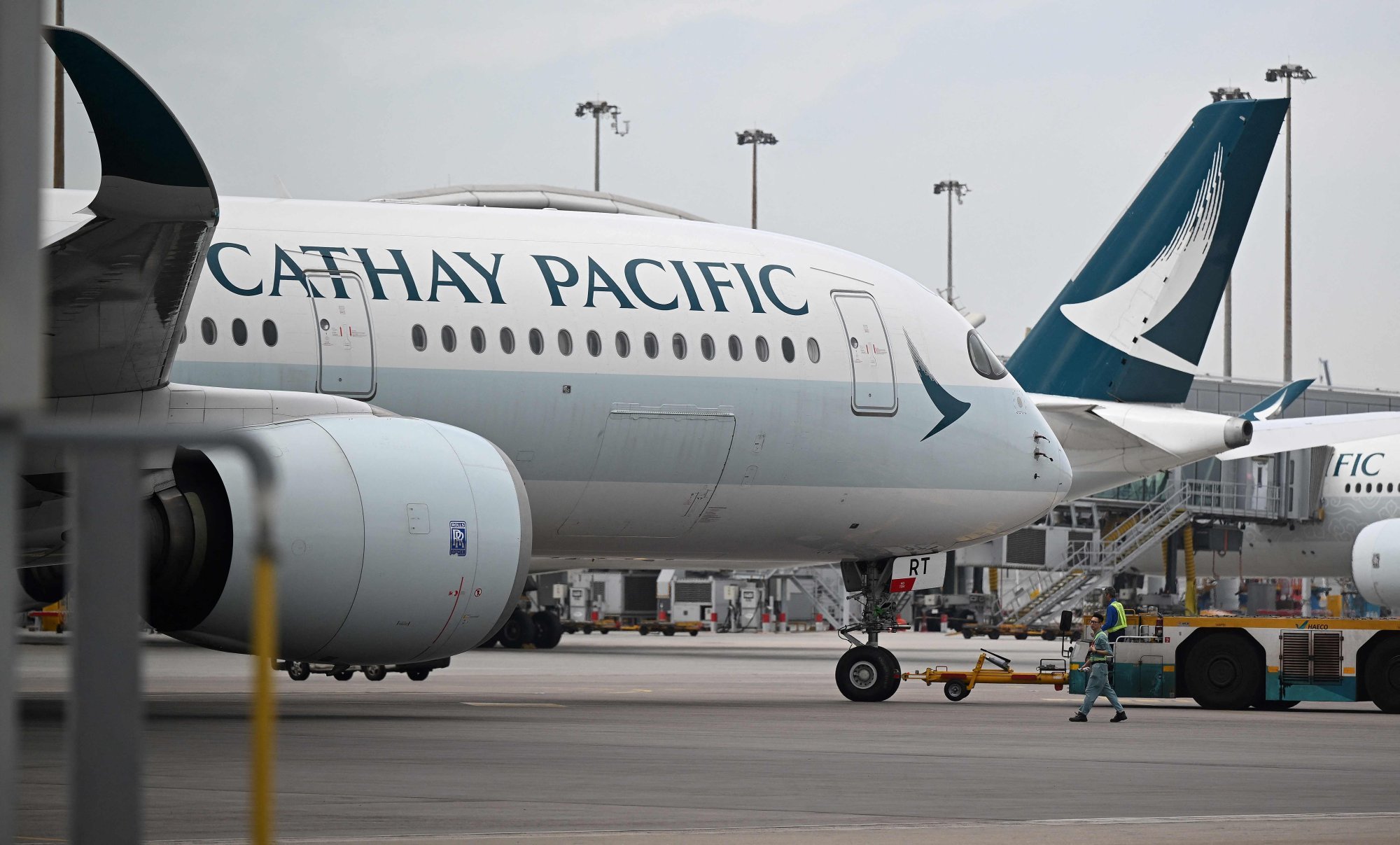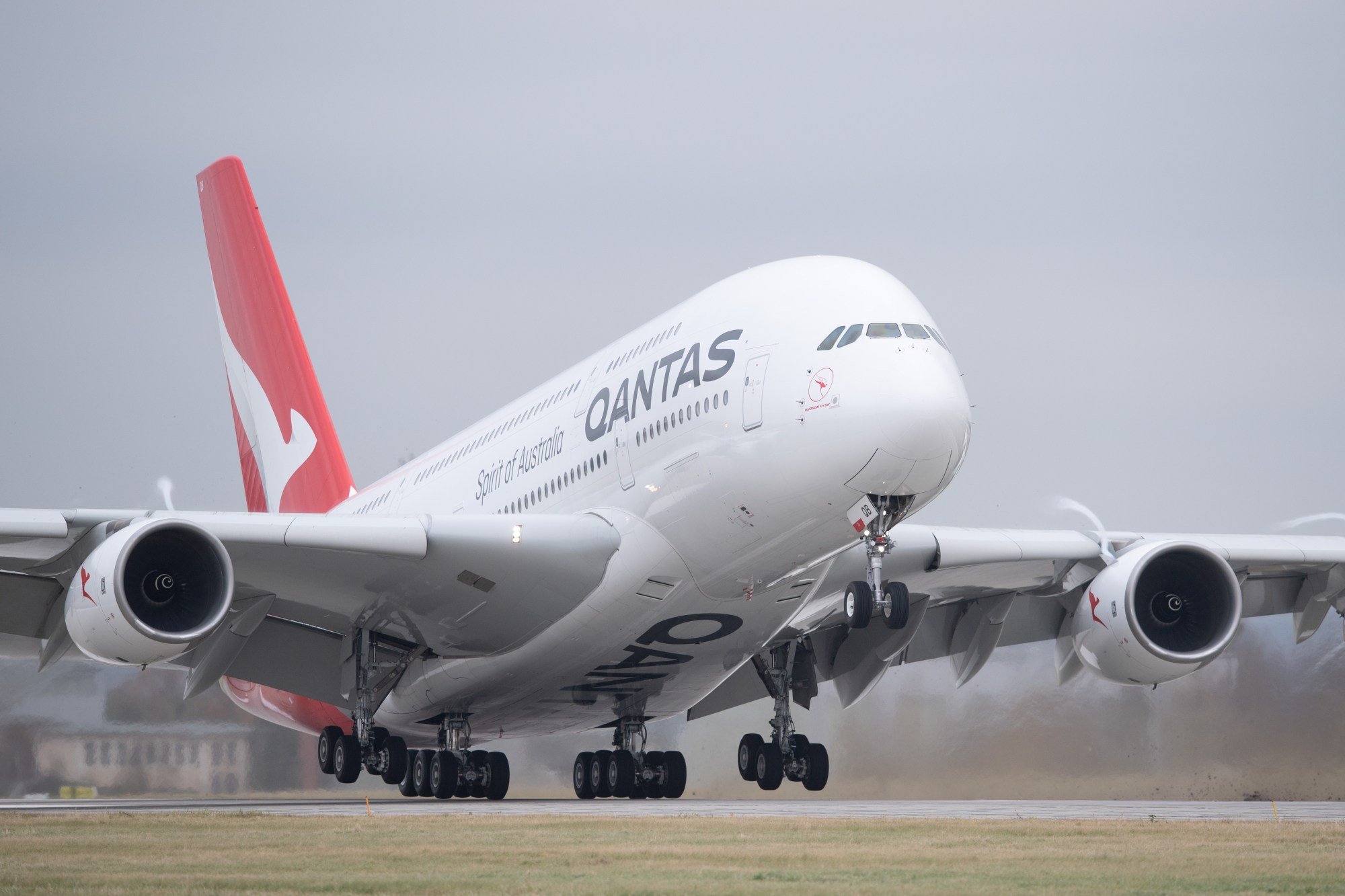
Airfares to increase as passengers pay for airlines’ adoption of sustainable aviation fuel
- Airlines are being forced to reduce their carbon emissions by using sustainable aviation fuel, which is in short supply and twice as expensive as kerosene fuel
- Much of the US$5 trillion cost will be borne by passengers, who have already been paying more to fly post-pandemic. A Singapore tax is a sign of things to come
The global airline industry has long warned passengers they’ll eventually have to pay some of the US$5 trillion cost of decarbonising air travel. And the moment has come.
Singapore’s government has announced a tax on air fares to fund purchases of pricey sustainable aviation fuel (SAF), while neighbouring Malaysia has authorised carriers to charge a carbon levy from next month.
In Europe, airlines this year lose one quarter of their free emissions allowance, the first in a series of reductions that’s already estimated to be adding to ticket prices.
“We’ve entered a new era,” said Rico Luman, a transport, logistics and automotive economist at ING Groep in Amsterdam. “Flying will turn more expensive.”

While the policies differ from country to country, the common goal is to clean up an aviation industry that for a century has relied on fossil fuels to function. Airline chiefs fret that unless they show they’re serious about cutting emissions right now, they’ll face fines, flying limits or be grounded completely.
SAF, a cleaner-burning liquid made from waste oils or agricultural feedstock, is the industry’s primary means of reaching its 2050 net zero target. But the new fuel is in short supply and can cost more than double that of normal jet kerosene, leaving airlines little choice but to pass the cost on to passengers.
Singapore plan for green fuel-linked flight levy unlikely to dent travel demand
It means little price respite for fliers who’ve been whacked by soaring prices since air travel resumed after the pandemic. Now, they’ll have to pay to neutralise aviation’s carbon footprint, too.
“That change is expensive,” Kiri Hannifin, Air New Zealand’s chief sustainability officer, said in an interview this week. “We do need to start talking to Kiwis about what flying is doing, why it’s impactful, why we’ve got to change.”
Air New Zealand wants sustainable fuel to account for around 20 per cent of its total fuel consumption by 2030, one of the most ambitious targets of its kind anywhere in the world. Delta Air Lines, Cathay Pacific Airways and Qantas Airways are among those with a 10 per cent target by the end of the decade.
SAF can cut emissions by as much as 80 per cent. The greener fuel is essential to reduce emissions from long-haul flights, the source of most air-travel pollution, because electric planes don’t have sufficient range. Hydrogen propulsion isn’t expected to make a meaningful impact for decades.

With time running out, air-travel levies or mandates to buy or supply SAF are rippling across the globe from Japan and Singapore to the European Union and Britain. The measures are designed to forcefully accelerate emissions reductions and assure green fuel suppliers that there will be buyers for their new, relatively expensive product.
“Voluntary measures have largely failed,” said Dan Rutherford, director of research at the International Council on Clean Transportation. The most effective policies are those that apply equally to all airlines instead of singling out carriers from a certain country, he said.
Singapore, for instance, aims to have all departing flights take off with 1 per cent SAF in engine tanks from 2026, rising to between 3 per cent and 5 per cent by 2030. The levy will vary depending on the length of the flight and the class of travel. An economy flight to London in 2026 would rise in cost by S$16 (US$12) under the policy.
Malaysia will in April allow airlines flying in and out of Kuala Lumpur to impose a carbon levy, either to pay for sustainable fuel or to fund carbon offsets. Details of the policy appeared in a local Bernama media report this month that was later confirmed by the transport ministry.
It pains me to suggest that travellers are going to have to pay more. There’s going to be an additional cost to aviation. That’s all there is to it
It pains me to suggest that travellers are going to have to pay more,” said at a renewable aviation fuels conference in Canberra this week. “There’s going to be an additional cost to aviation. That’s all there is to it
Under the European Union’s ReFuelEU initiative, conventional jet kerosene must be blended with 2 per cent SAF in 2025, gradually increasing to 70 per cent by 2050. Britain also plans to mandate SAF use next year.
It’s not just the price of fuel that passengers will absorb. The cost of buying new, less thirsty aircraft is also dripping down into fares. Last week, Qantas, which has started to receive the first of dozens of next-generation planes on order, said it’s raising fares on most domestic routes by an average of 2 per cent to 3 per cent.

According to Luman, this year’s reduction to aviation’s free emissions allowance in the EU may be adding €8 (US$8.75) to the price of a return flight between London and Rome. The extra cost would be more than €30 in 2026 at current carbon prices, he said. Luman cautioned that it’s hard to isolate the precise impact of the policy because other factors, including a lack of capacity, are also pushing up fares.
The International Air Transport Association calculates that aviation’s transition to net zero will require investment of as much as US$5 trillion through to 2050. Even those with the most to lose are acknowledging that passengers can’t escape the bill.
“It pains me to suggest that travellers are going to have to pay more,” Margy Osmond, chief executive of Tourism & Transport Forum Australia, said at a renewable aviation fuels conference in Canberra this week. “There’s going to be an additional cost to aviation. That’s all there is to it.”

